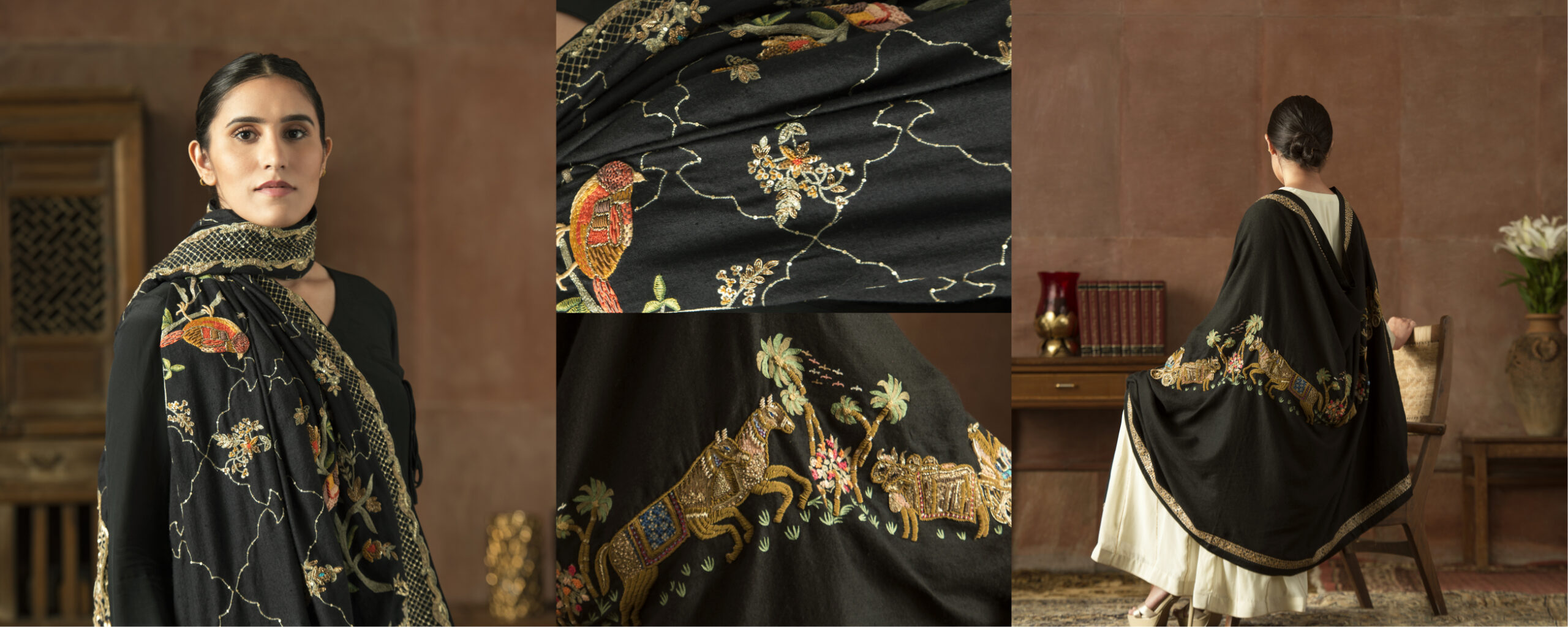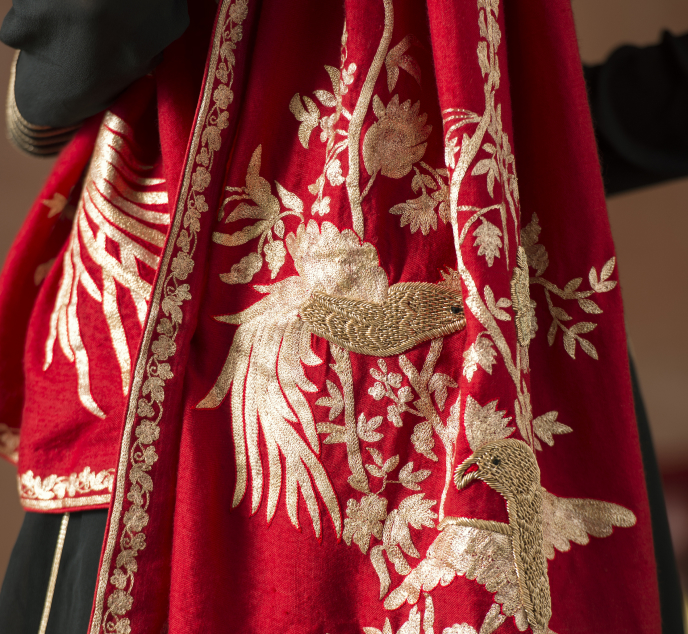





An impossible made possible by Samarjeet Gurm, a dexterous, tapestry maestro
and the spirit behind the brand Plumtin who is able to render zardozi direct on
pashmina, created the rarest of rare shawls under her revivalist
project Kalabatun.
When a heritage embroidery as rare as Zardozi lights up a precious
pashmina, true magic ensues.

An impossible made possible by Samarjeet Gurm, a
dexterous, tapestry maestro and the spirit behind
the brand Plumtin who is able to render zardozi
direct on pashmina, created the rarest of rare
shawls under her revivalist
project Kalabatun
When a heritage embroidery as rare as Zardozi
lights up a precious
pashmina, true magic ensues.
